Accelerate ASU Change the future with





The research is clear: Students who engage with college programs during high school are more likely to attend and three times more likely to complete college. For students with diverse academic backgrounds who lack access and opportunity, the benefits are even greater.
Too often, students are unable to access college-level options, such as dual enrollment, due to a lack of school and local resources. Accelerate ASU plays a key role in addressing these challenges.
Accelerate ASU at Arizona State University is changing the game for high school students with open access college courses – online, hybrid and in-person – with flexible models that are tailored to school and community needs. Serving more than 22,000 students across more than 500 public, private, charter and hybrid schools nationwide since its inception in 2021, it is one of the largest university dual enrollment programs in the U.S. Through Accelerate ASU, high school students gain greater access to college courses, build confidence mastering the material and learn to thrive in college and beyond.
“There are differences across school districts, where you have some schools in one district that will have 200 unique credits of dual enrollment and have a very high college-going rate post high school,” says Audrey Moreno, senior director of national bridge partnerships at ASU Learning Enterprise. “You’ll have another school in the same district that has 30 credits of dual enrollment and a much lower college-going rate post high school, and what you see is a cultural difference in those schools.”

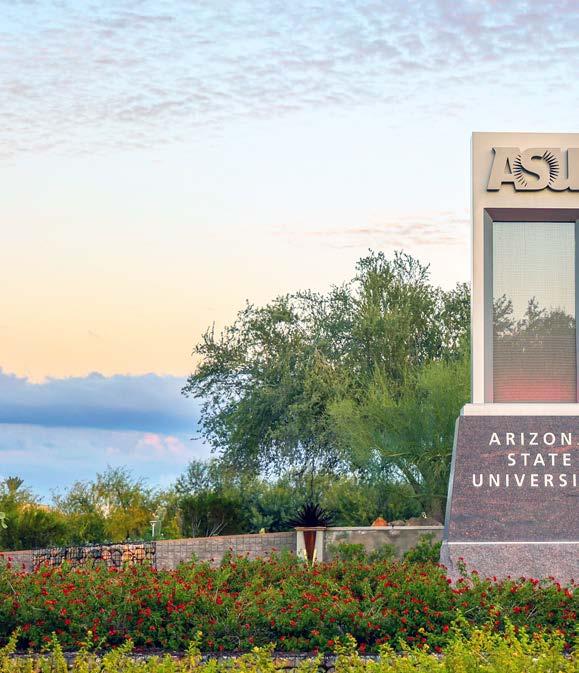
Accelerate ASU directly benefits students, teachers and school districts — a wide-reaching impact with transformational potential.
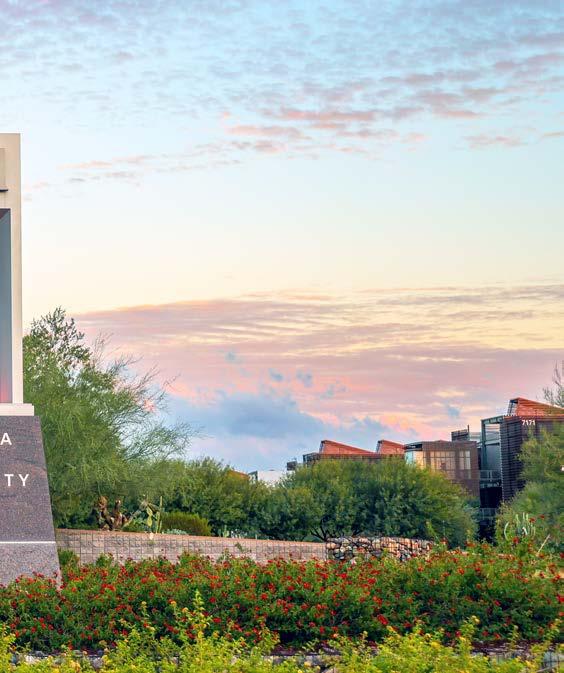

Helping students to see themselves as “college material” is an intangible but powerful impact of Accelerate ASU.



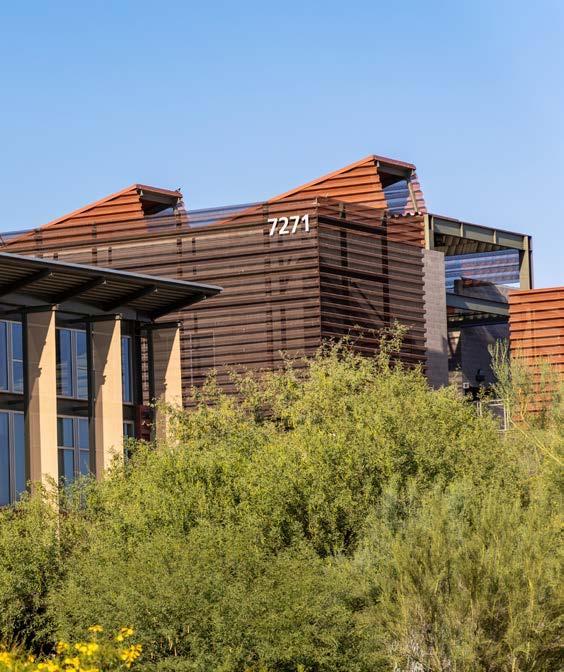
To help more students succeed, Accelerate ASU provides access to Universal Learner Courses — flexible, online, asynchronous courses taught by ASU faculty and aligned with ASU degree programs — to high school partners across the nation. Courses such as chemistry, biology and computer networking are open access for students and offer universal eligibility, removing traditional barriers like placement testing and grade point average thresholds. Not only does this open doors for more students to obtain college credit during high school, but it also reshapes perceptions, helping them begin to envision themselves as college bound. “There’s this fear of, ‘What if I’m not college material?’” says Moreno. “Accelerate ASU allows students to try in a space where they can be supported by their school, where their school has the freedom to implement in a way that works for their student population.”
Accelerate ASU is playing in helping me earn a while being dually enrolled school...It’s an amazing earn college credits university at a greatly
playing a huge role college degree enrolled in high amazing opportunity to credits from a top-name greatly reduced cost.
—Cayla R. High school learner
The Universal Learner model is built to meet students and teachers where they are. It’s not a one-size-fits-all approach.
“Exposure to dual credit in high school… enhances their ability to progress all the way through to a credential post high school, which is super important for earning a living wage and job potential.”
— Audrey Moreno Senior director of national bridge partnerships
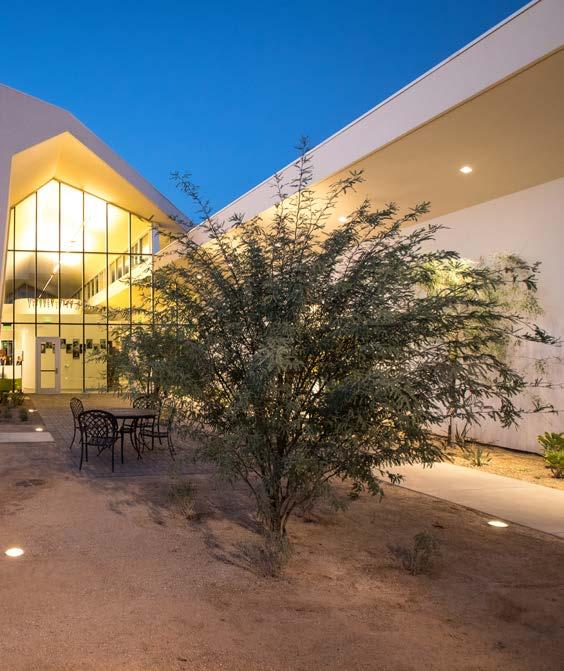

There are two primary avenues for dual enrollment: One relies on a high school student to seek opportunities directly through a college and attend courses either on campus or online on their own; another relies on high schools to offer college-level classes to their students.
Through ASU’s Universal Learner model, high school teachers can utilize ASU courses taught by ASU faculty right in their own classrooms, offering an unprecedented level of flexibility and access. With three facilitation models, schools can choose what works best for their students — whether that means teachers facilitating an ASU course during scheduled class times, allowing students to complete at their own pace with the support of an academic coach, or offering students full autonomy to complete on their own time and schedule.
No matter the model, offering college-level courses in high school opens new academic and career pathways for students, reducing the need for additional preparation after high school and lessening the financial burden of a college education.
• Exposes them to new academic and career pathways
• Increases preparedness for college success and career readiness
• Lessens the financial burden of a college education
• Fosters identity, confidence and self-efficacy Supporting

Across the nation, only about one-third of students graduate from high school with college credits. Through Changing Futures, we’ll grow this number by bringing the game-changing offerings of Accelerate ASU to more schools and students. We’ll also expand access to credentialing opportunities for high school students who aren’t yet ready to make the leap to college. Short-term career foundation certificates allow students to immediately pursue a more livable wage, gain access to quality careerrelated experiences and enhance their job prospects down the road.
With your support, we can give every child equal access to college education and a better life, regardless of socioeconomic or at-risk status.
College access supports completion and changes futures. Join us in making higher education more accessible to more students.
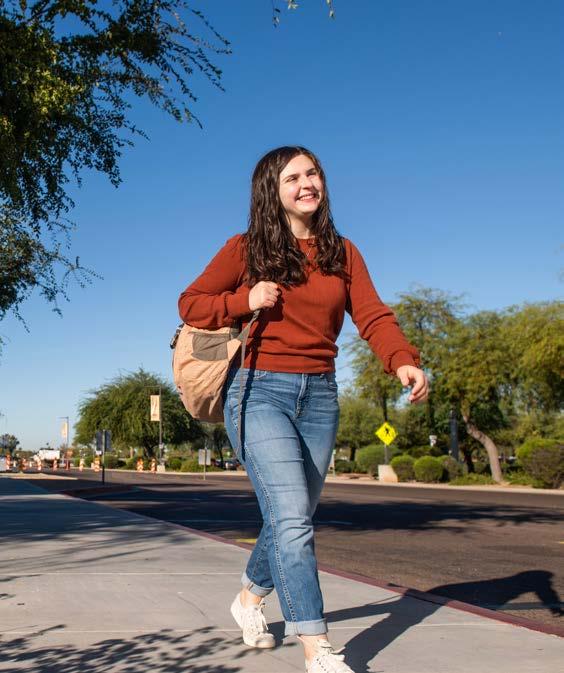
ASU’s Learning Enterprise expands universal access to opportunity for learners – at every stage in life. We’re reimagining the role of universities in society as catalysts of economic and social mobility, guided by the belief that all learners can harness education as a ladder of opportunity. Our programs meet learners wherever they are, removing the barriers while prioritizing belonging and support. Through ASU’s Learning Enterprise, it’s easy to get started on your learning journey – and there’s no limit to where you can go.

ASU is a comprehensive public research university, measured not by whom it excludes, but by whom it includes and how they succeed; advancing research and discovery of public value; and assuming fundamental responsibility for the economic, social, cultural and overall health of the communities it serves.